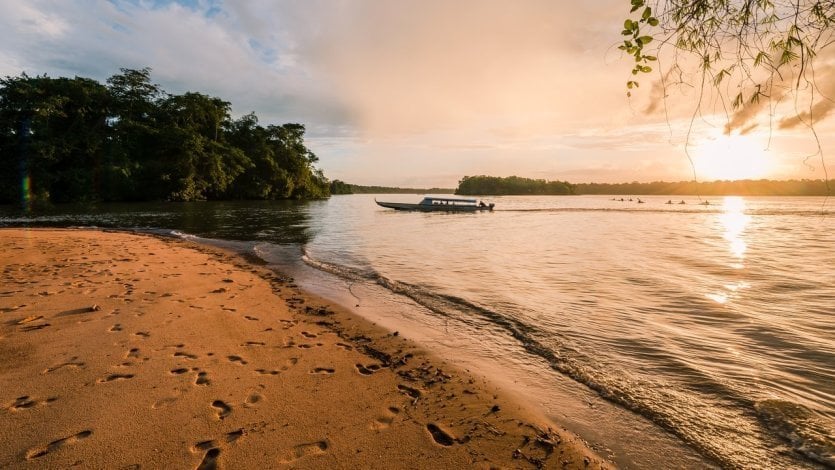
A French overseas department located in northeastern South America, French Guiana is 98% covered by a vast equatorial forest. It's a territory that's a delight for nature lovers, with a rich and diverse flora and fauna. From the forest to the beaches, from the remains of places that have marked its history to the exciting base from which Ariane rockets are launched, French Guiana is a region that never ceases to amaze. Ready to cross the Atlantic to discover this land of diverse cultures and breathtaking natural beauty? Here are 10 reasons to plan a vacation in French Guiana.
1- Cayenne, a must-see capital
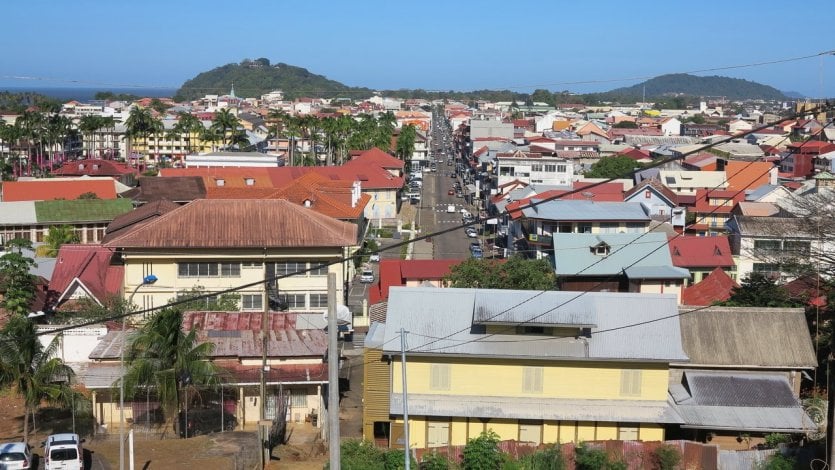
One of the first things to do when visiting French Guiana is to explore its capital, Cayenne. You'll want to keep your eyes peeled as you stroll through the streets, which reveal Creole houses in shimmering colors and distinctive architecture. As soon as the opportunity arises, sit down at a restaurant table to sample specialties such as acras and grilled fish. A visit to the Cayenne market is also a must. The metal structure of the main building was designed by Gustave Eiffel in 1907. You'll find fruits, vegetables, fish, meat fricassees, spices, Asian flavors and rum. Later, head for the town's main museums, including the birthplace of Guyanese politician Félix Éboué, and the Musée des Cultures Guyanaises, dedicated to ethnic objects, where you can learn more about the different peoples who have lived in French Guiana. If you'd like to take a break from the hustle and bustle, you can visit Cayenne's pretty botanical gardens.
And then, just 1 hour's drive from Cayenne is the village of Cacao. It's here that inhabitants of the Asian Hmong community have developed extensive crops of fresh produce. The Sunday market features stalls that vie with each other in color and abound in fruit and vegetables, cooked dishes, local juices, embroidery and souvenirs. And don't miss the famous Insect Museum , as well as hikes in the surrounding area.
2- A pirogue trip down the Maroni and Oyapock rivers
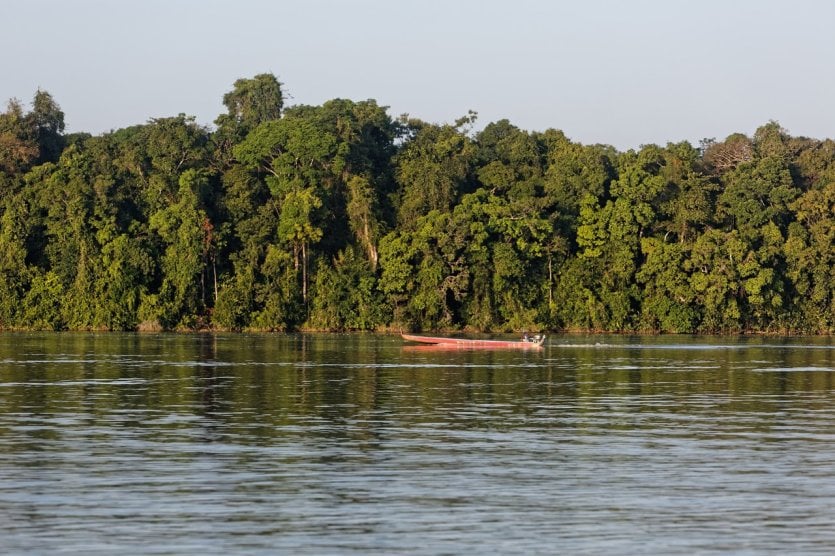
One of the must-do experiences of a stay in French Guiana is a pirogue trip down the Maroni River, the natural border with Suriname. It's an opportunity to contemplate nature in all its detail from the water, as well as to stop off at Bushinengué and Amerindian villages along Guyana's largest river. The stopovers allow you tocome into contact with a melting pot of cultures , and to learn more about the most common form of agriculture in French Guiana, the abattis. You can also witness the preparation of manioc or the construction of traditional pirogues. Another alternative is a pirogue trip on the Oyapock, a river that marks the border between French Guiana and Brazil. The river trip is another opportunity to observe lush vegetation, pass by rustic villages or reach the foot of the Oyapock bridge, which links the town of Saint-Georges in French Guiana with the town of Oiapoque in Amapá (Brazil).
3- Discover the Salvation Islands
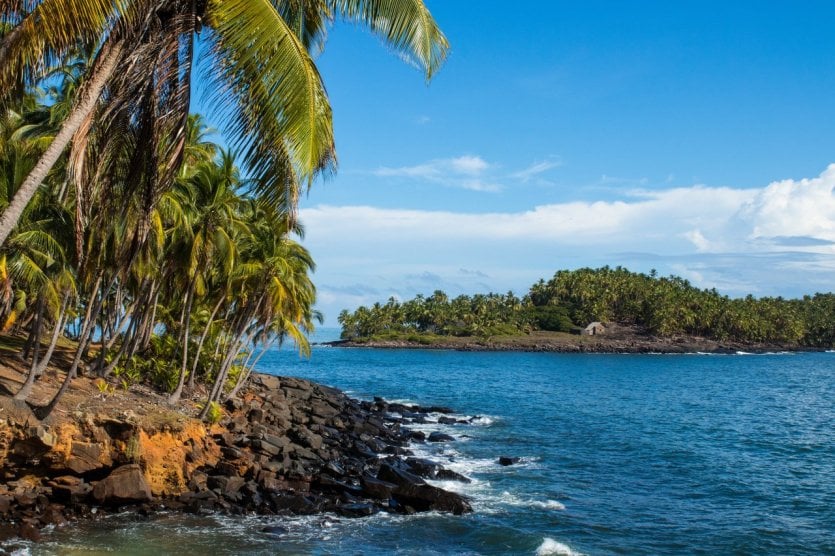
A must-do activity? Set sail for the îles du Salut, an archipelago of three islands of volcanic origin located 14 km off the coast of Kourou. Two of the islands can be visited: the Royale and Saint-Joseph islands. You can also sleep and eat here. In the past, prisoners were held here in particularly harsh and aberrant conditions. Some of the prison buildings, closed in the mid-20th century, have been restored and can now be visited. Apart from these places, which are bound to stir the emotions, walks around the islands are an opportunity to observe plants and animals, including monkeys and macaws. Ile Royale remains the most visited.
4- Watch turtles lay their eggs
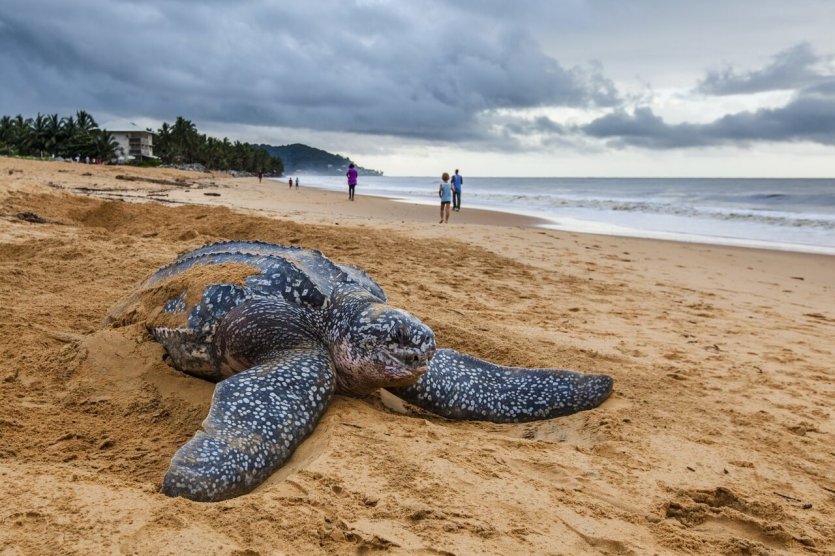
Guiana' s remarkably unspoilt beaches are a delight for a variety of turtles, who come to dig holes in the sand to lay dozens of eggs. A unique and memorable natural spectacle that visitors can witness between February and August. Several species of turtle have made the beaches of French Guiana their preferred place to lay their eggs. These include the leatherback, green and olive ridley turtles. Head for the beaches of Rémire-Montjoly or Awala-Yalimapo to experience this moment of communion with endangered species. Of course, everything is done to ensure the utmost respect for the animals.
5- Venture into the Trésor and Kaw nature reserves
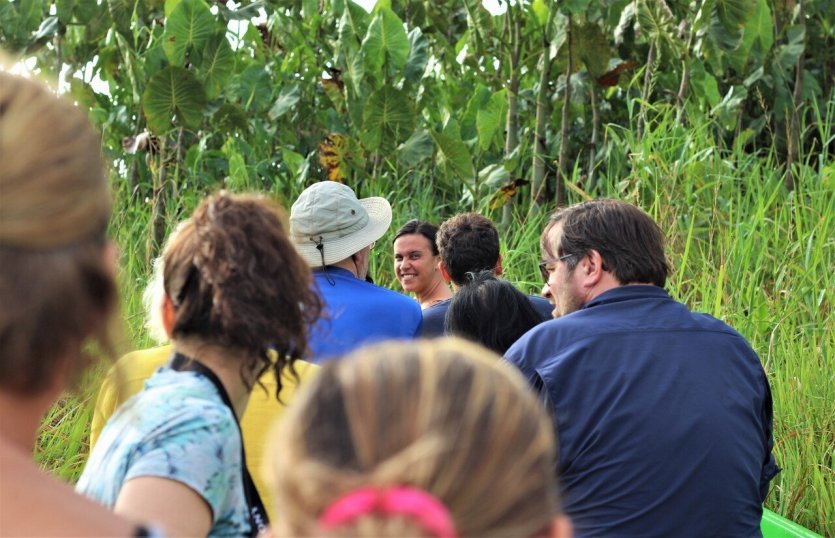
The Trésor nature reserve is located on the south-western flank of the Kaw mountain. With a surface area of just 2,500 hectares, it is home to a varied and rich ecosystem, with animal and plant species, some of which are endemic. Much larger, with a surface area of 90,000 hectares, the Kaw reserve is less accessible and can be discovered during a pirogue trip. Marshes, mangroves, tropical rainforest and flooded savannah, thenatural environment is simply incredible, rich in animals including many rare species, such as the black caiman.
6- Sleeping in a carbet in the middle of the Amazon rainforest
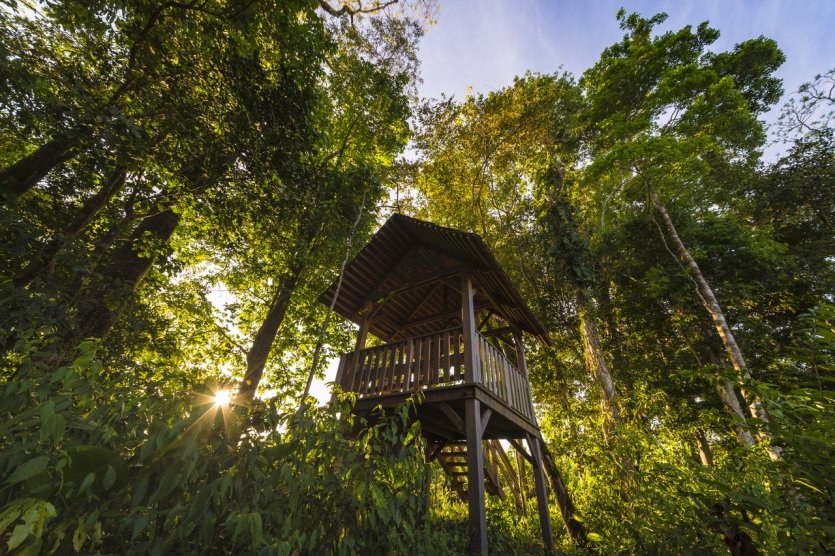
One of the most authentic ways to discover the Amazon rainforest is to sleep in a carbet. These traditional wooden dwellings await visitors on the outskirts of certain villages on the Maroni, Kourou or Approuague rivers. What a delight to sleep in a hammock under the Milky Way and to the sound of the recital of the local fauna, which remains discreet at night: birds, bats, amphibians, cicadas or howler monkeys. The next day, you're ideally placed to explore the Amazon rainforest with a guide and marvel at the hundreds of species of trees, creepers, waterholes and waterfalls.
7- Lazing on the beaches of Rémire-Montjoly
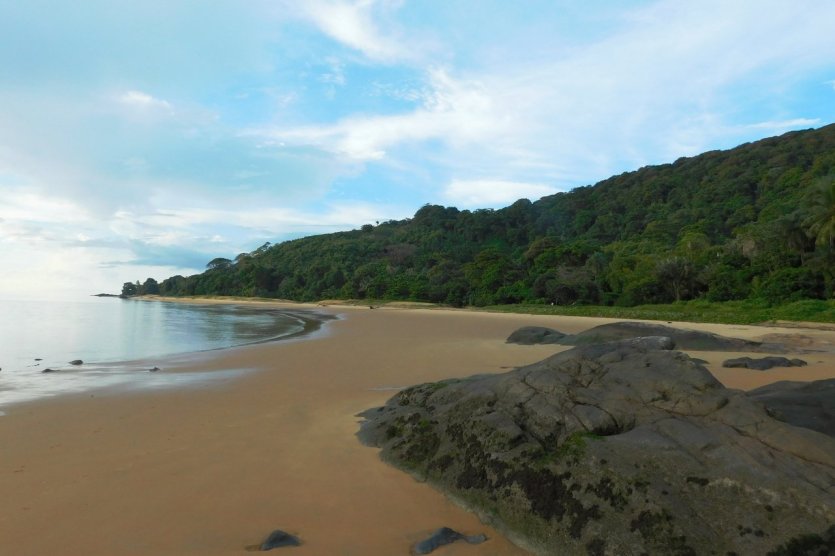
For sea lovers, the beaches of Rémire-Montjoly or Kourou are ideal for a few moments in the sun. As the waters are rich in silt, they are cloudy due to the meeting of fresh and salt water, rather like those on the banks of the Gironde estuary, for example, but they are still very pleasant for cooling off after a walk in the surrounding countryside. The beaches are bordered bylush greenery and coconut palms. On the sand, you can relax, sunbathe or read in the shade of a palm tree. During the week, these stretches of sand are sometimes deserted. A good way to escape the hustle and bustle, while feeling at the end of the world.
8- Visit the Guiana Space Center
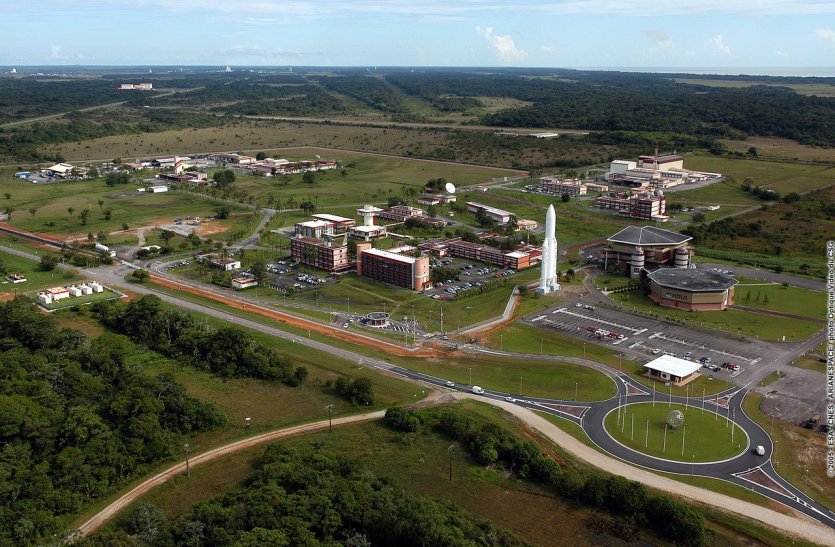
The Centre Spatial Guyanais in Kourou is a place not to be missed under any circumstances. You can start your visit with a stroll through the Space Museum, where you can learn more about the conquest of the moon and space, as well as the various European space programs and their objectives. A place that appeals to young and old alike. What's more, with two or three rocket launches a year, the Guiana Space Center offers an experience that will leave a lasting impression: reserving a seat for the launch of an Ariane rocket (Ariane V until 2023 and Ariane VI, with flights starting in 2024). A magical moment!
9- Dive into history at the Saint-Laurent-du-Maroni penal colony
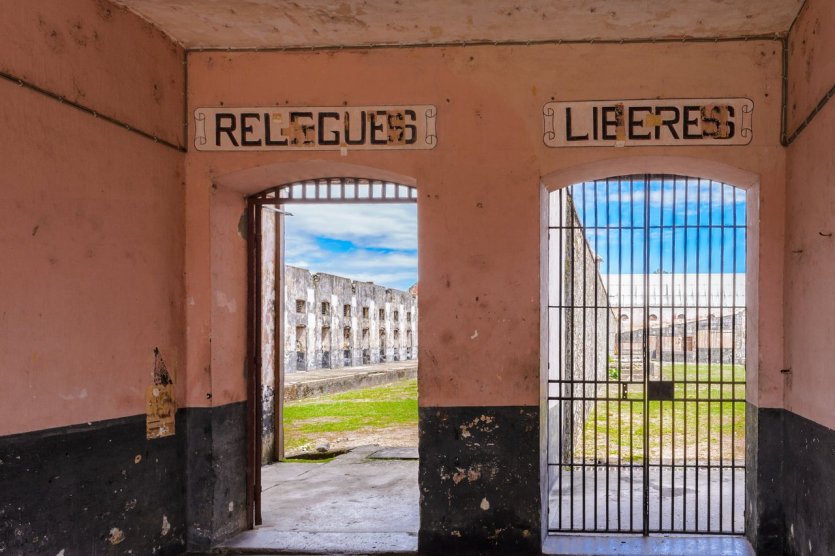
The Saint-Laurent-du-Maroni penal colony, also known as the Transportation camp, was a site where prisoners were temporarily housed before being sent to prison buildings scattered throughout the country. A place where detention conditions were particularly difficult, and where Henri Charrière, author of the book Papillon, was imprisoned, for example. A tour of this darkly atmospheric facility takes in its various areas, including cells, quarters, sanitary facilities, blockhouses and staff rooms. French-speaking guides are on hand to ensure that you don't miss a single detail or anecdote about this place where nature is gradually reclaiming its rights.
10- Attend the Guiana Carnival
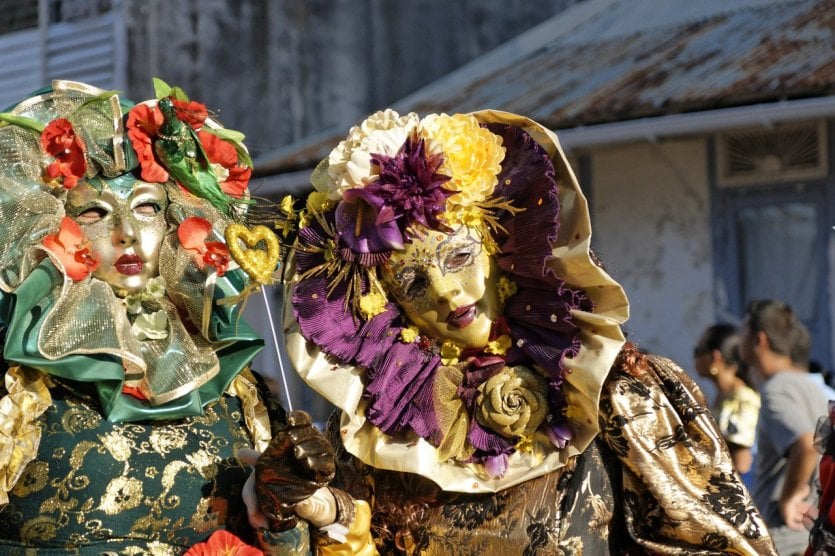
Once celebrated by the colonists and clandestinely by the slaves, Guyana's Carnival is an important part of the Guyanese calendar. It takes place between the end of January and February or March, between Epiphany and Ash Wednesday. It's a time of diversity, as the various cultural influences are immediately apparent in the street parades: Amerindian, French, African, Caribbean, Brazilian, Asian, and so on. The people marching to the music are dressed in sublime costumes, and there's always plenty of fun to be had. Another carnival highlight is the masked balls. Here, the queen of the ball, in disguise and leading the dance, is the touloulou, who regularly invites the gentlemen to dance... And don't turn down her invitation! Carnival is most impressive in Cayenne.
How do I get to French Guiana?
French Guiana is located in South America. Several airlines offer flights between Paris Orly and Félix Éboué airport in Cayenne, including Air France and Air Caraïbes. The latter offers a TGV+flight package to Paris from the provinces. Other French cities offer flights to French Guiana, including Marseille, Lyon and Bordeaux. However, the flight includes a stopover in Paris.
When is the best time to go to French Guiana?
French Guiana enjoys an equatorial climate. However, it is tempered by the trade winds, which enable it to boast a very pleasant year-round temperature of 26°C. The most important factor to consider when planning a trip is humidity. The ideal time to go is the dry season, from July to the end of October. Conditions are perfect for strolling through the rainforest or spending time on the beach. The carnival period combines the joy of festivities and nature outings with alternating rains. The rainy season from April to the end of June is favorable for boating and allows you to penetrate the forest a little further. It's also a great time for activities such as Guyaning! A guaranteed thrill for sports enthusiasts.


